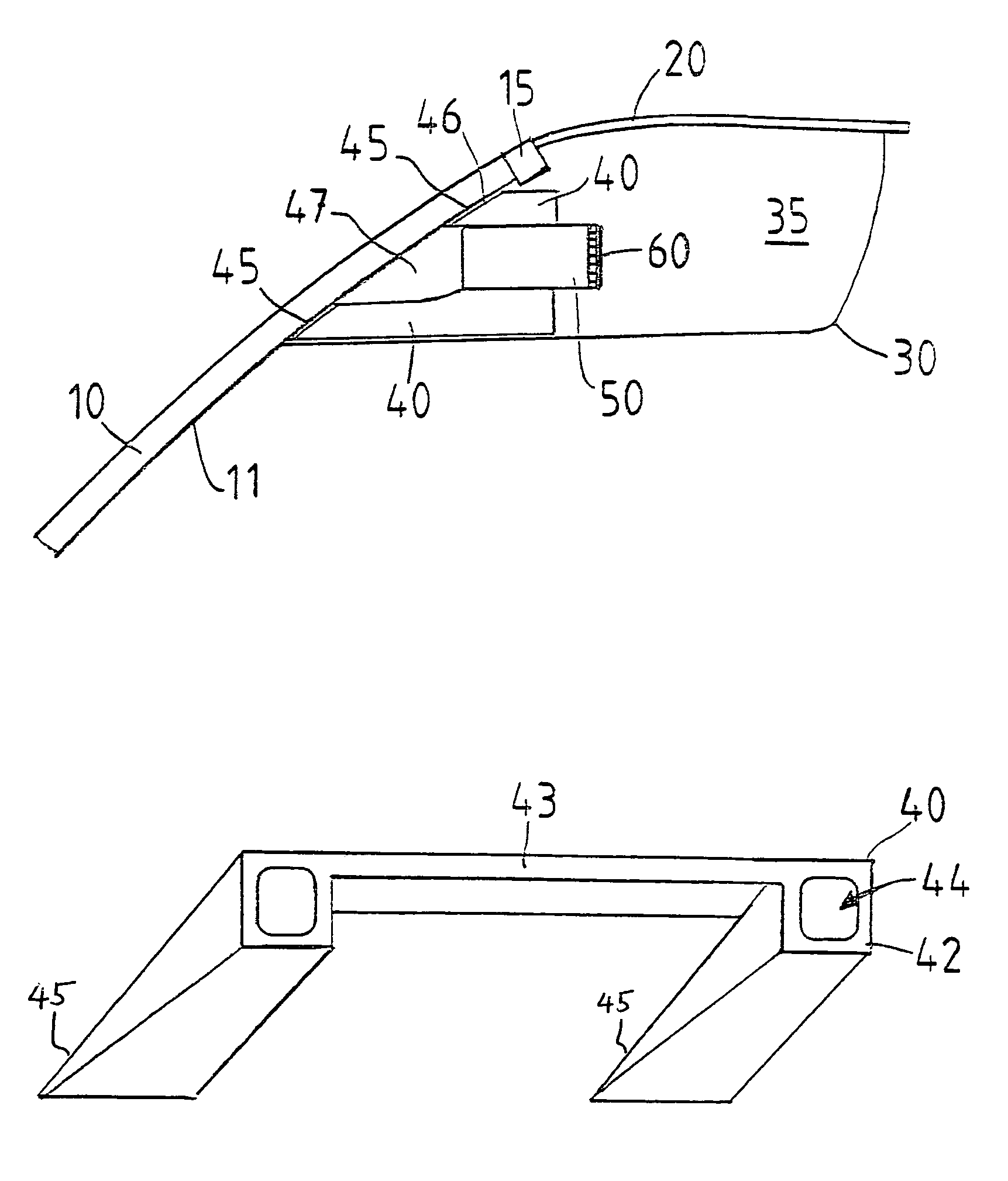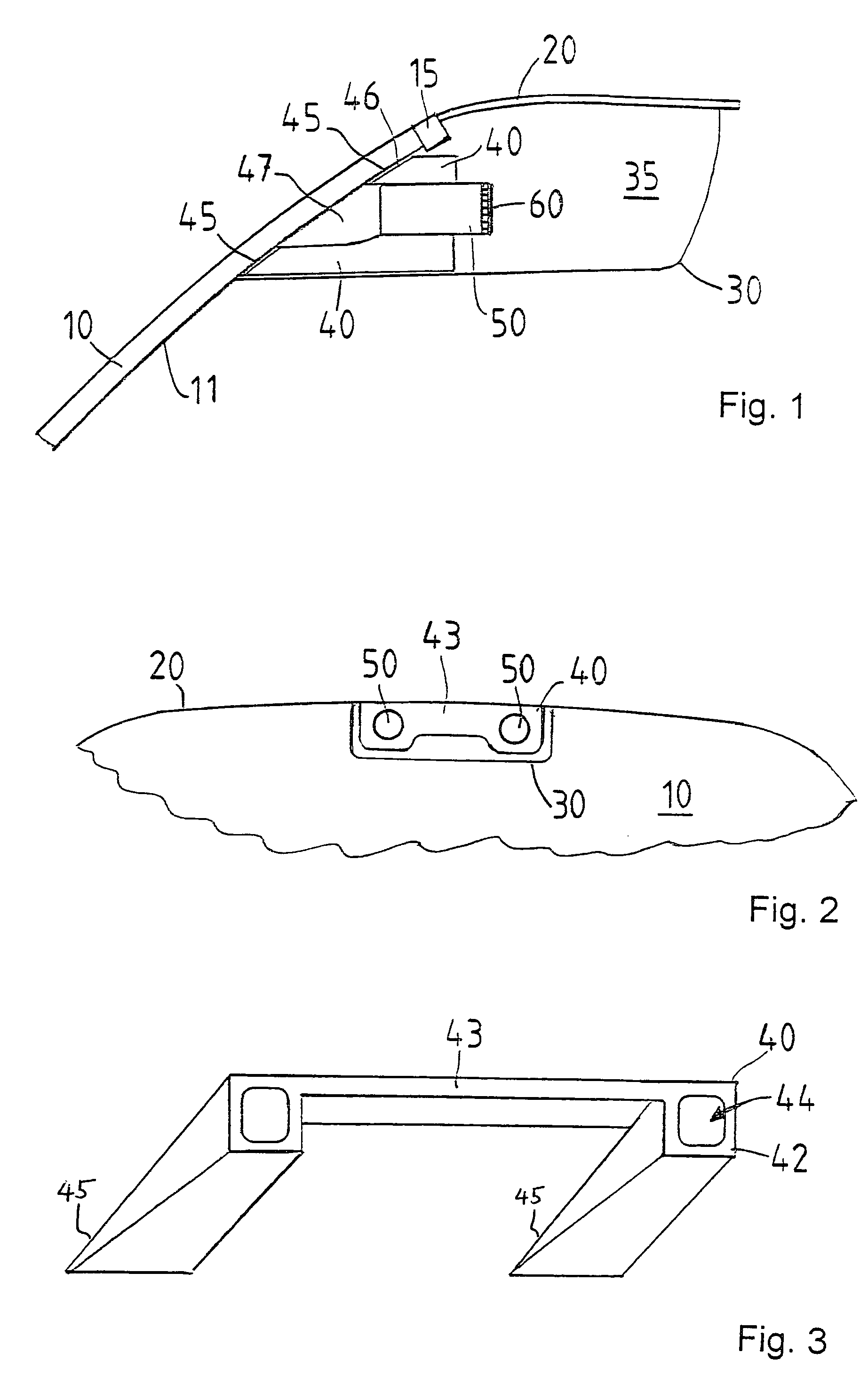Stereo camera arrangement in a motor vehicle
a camera system and motor vehicle technology, applied in the direction of television systems, instruments, machine supports, etc., can solve the problems of short changes in spacing between the camera modules and the motor vehicle, the inability to adjust, and the inability to use the support. , to achieve the effect of simple and secure assembly, quick change of spacing
- Summary
- Abstract
- Description
- Claims
- Application Information
AI Technical Summary
Benefits of technology
Problems solved by technology
Method used
Image
Examples
Embodiment Construction
[0017]FIG. 1 shows, as a partial view of a motor vehicle, an upper region of windshield 10, which is connected by a seal 15 with a roof section 20 of the vehicle. A cover 30 is provided between the inside 11 of windshield 10 and roof section 20 and encloses a camera region 35. Provided in camera region 35 is a mount 40, which is fastened to the inside 11 of windshield 10 in cementing regions 45 by a cementing layer 46. According to FIGS. 1, 2, mount 40 does not rest against cover 30. Mount 40 holds two camera modules 50, essentially parallel to one another, at a specified distance apart, a space 47 in front of the lens being formed between each camera module 50 and windshield 10, in order not to influence the optical path in front of the camera modules. Cementing regions 45 advantageously extend annularly about spaces 47, in front of the lenses so that mount 40 covers the camera modules at the bottom and at the sides and thus keeps scattered light away from camera modules 50. Accord...
PUM
 Login to View More
Login to View More Abstract
Description
Claims
Application Information
 Login to View More
Login to View More - R&D
- Intellectual Property
- Life Sciences
- Materials
- Tech Scout
- Unparalleled Data Quality
- Higher Quality Content
- 60% Fewer Hallucinations
Browse by: Latest US Patents, China's latest patents, Technical Efficacy Thesaurus, Application Domain, Technology Topic, Popular Technical Reports.
© 2025 PatSnap. All rights reserved.Legal|Privacy policy|Modern Slavery Act Transparency Statement|Sitemap|About US| Contact US: help@patsnap.com


